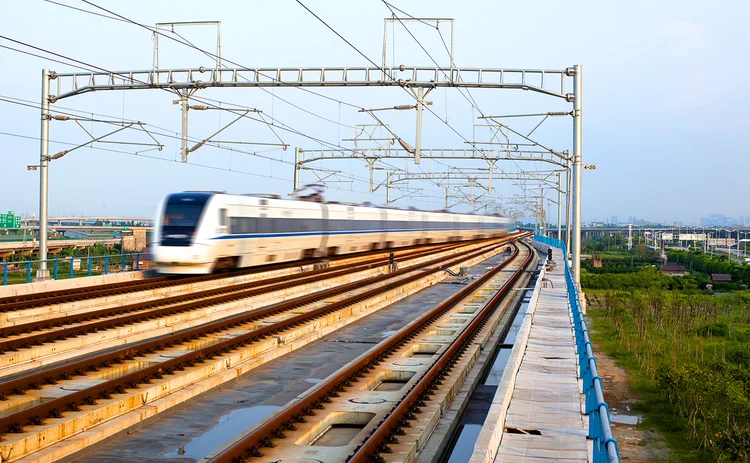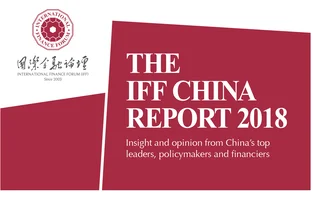
The rungs to success – A new driving force in the Bay Area Development
Xing Ziqiang, chief economist at Morgan Stanley China, examines the rise of the lower-tier cities that are narrowing the gap with China’s metropolises to become the building blocks for a successful Bay Area Development


The Guangdong–Hong Kong–Macao Greater Bay Area (the Bay Area Development) is far from a new concept. Its planning and construction conform to the three trends in China’s economic development, the first of which is consumption. Today, consumption in China is increasingly driven by small and medium-sized, third- and fourth-tier cities, rather than by metropolises or first-tier cities. These lower-rung cities now account for more than 80% of new urban populations annually, which represents significant growth compared with five years ago. This growth is primarily due to the emergence of new employment opportunities and wage increases. In part caused by the reform of the household registration system in the third- and fourth-tier cities, in recent years, the development of infrastructure and traffic systems – high-speed railways, for example – has created space for businesses to expand into the satellite cities around metropolises. This infrastructure development hastens the growth of employment opportunities and wages; a spike in population follows. Currently, the third- and fourth-tier cities of Guangdong Province have an average population of more than 2 million – a demographic volume that provides a vast market prospect for consumption growth.

New models of investment and export
The second new trend in China’s economic development is that of foreign investment, which made a great contribution to this round of economic recovery. In 2016–2017, foreign investment in China rose from zero to 6–7%, driven primarily by technological upgrading and equipment replacement. Thanks to a booming private economy, advanced technology industry and a new economic direction, Guangdong is among the most successful areas for direct foreign investment in the country. This investment recovery will not only further expand the production capacity, but also streamline the production efficiency of enterprises.
Exports are the third new trend in China’s economic development. Exports were once characterised by relatively low added value, formed for the most part by labour-intensive manufacturing. Guangdong was known for its export volume, but poor competitiveness. However, in the past five years, there has been a tremendous improvement in the quality of its exports as a result of the shift to innovative and knowledge-based investment. In 2017, China surpassed Japan for the first time to become the second-largest patent applicant in the world.Of these Chinese patents, two-thirds originated in Guangzhou and Shenzhen, demonstrating the native strengths and potential of innovation in Guangdong. Currently, China’s export share of global high-value-added exports has risen to 16% from 8% eight years ago, surpassing that of Germany, the US and Japan. Guangdong can take most of the credit for this surge. Against the backdrop of a transformation in consumption and investment, the construction of the Greater Bay Area firmly aims the spotlight on Guangdong.
Balancing an economic contradiction
The Chinese government needs to focus on the following aspects in the Bay Area Development. First, it should continue to conduct favourable policies that enhance the equalisation of public resources to support it. The report of the 19th National Congress of the Communist Party of China indicated that the main contradiction facing Chinese society has evolved: it now faces “the contradiction between unbalanced and inadequate development and the people’s ever-growing need for a better life”. For example, in the third and fourth tiers and satellite cities, a more focused allocation of public resources is a priority. In recent years, these cities have narrowed the gap between them and the first-tier cities in their medical and educational resources. It is believed that, in the next five to 10 years, government policy will incline towards the equalisation of public resources.
Second, rapid development has been achieved in the areas of infrastructure and interconnection in high-speed rail, mobile internet, communications and logistics. In just a few years, the high-speed rail network has spread between many third- and fourth-tier cities and brought about a huge spillover effect. Guangdong’s high-speed railway system has been underdeveloped but, in recent years, it has been catching up and is expected to cover most of the satellite, third- and fourth-tier cities in Guangdong by 2020. In addition, the logistics field has achieved amazing and rapid development: at present, the cost of cross-city express delivery has dropped to approximately CNY9, almost equivalent to the cost of local city express delivery. Such initiatives are conducive to promoting the consumption of residents in satellite cities and third- and fourth-tier cities.
Third, each city in the Bay Area Development has distinct advantages in creating talent flow. Guangzhou and Hong Kong have a relatively large talent reserve while Shenzhen requires a large volume of talent to support its innovation, research and development. The free flow of talent between cities should be the goal for the Bay Area Development.
Finally, China must continue to spur the development of a new economy that plays a key role in the construction of the Greater Bay Area as well as in the economic transformation of China. In employment generation and consumption, upstream traditional industries provide fewer job opportunities as a consequence of the supply-side reform. However, the employment situation is still improving and wage levels are rapidly rising. The service industry generates more than 10 million new jobs each year and is more than capable of offsetting the impact of dwindling employment in traditional industries.
In conclusion, the Bay Area Development possesses huge potential. Following the path of global bay areas such as those in New York, San Francisco and Tokyo, the Greater Bay Area can achieve interconnectivity, equalisation of public resources allocation, and free flow of talent and resources, increase its population by 18 million in the next 10 to 15 years and become the largest and most populous bay area by 2030. It will become a powerful driving force that thrusts China into place among the high-income countries.
Only users who have a paid subscription or are part of a corporate subscription are able to print or copy content.
To access these options, along with all other subscription benefits, please contact info@centralbanking.com or view our subscription options here: subscriptions.centralbanking.com/subscribe
You are currently unable to print this content. Please contact info@centralbanking.com to find out more.
You are currently unable to copy this content. Please contact info@centralbanking.com to find out more.
Copyright Infopro Digital Limited. All rights reserved.
As outlined in our terms and conditions, https://www.infopro-digital.com/terms-and-conditions/subscriptions/ (point 2.4), printing is limited to a single copy.
If you would like to purchase additional rights please email info@centralbanking.com test test test
Copyright Infopro Digital Limited. All rights reserved.
You may share this content using our article tools. As outlined in our terms and conditions, https://www.infopro-digital.com/terms-and-conditions/subscriptions/ (clause 2.4), an Authorised User may only make one copy of the materials for their own personal use. You must also comply with the restrictions in clause 2.5.
If you would like to purchase additional rights please email info@centralbanking.com test test test







